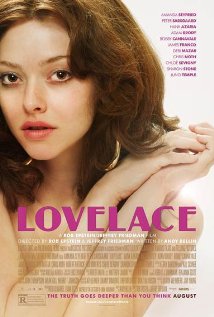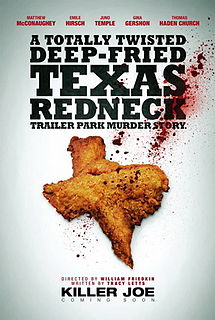 Lovelace/2013/Millennium Films/93 min.
Lovelace/2013/Millennium Films/93 min.
“Lovelace,” the story of the porn star’s rise and fall, presents a strange creative paradox: the film’s chief virtue is its strong acting, yet the characterizations are also uniformly one-note. In other words, the actors do their very best with what they have and deliver compelling work. But overall, “Lovelace” feels unsatisfying, superficial and obvious.
We first meet Linda Lovelace (Amanda Seyfried) as a jaded star, dragging on a cigarette as she lounges in a marble bathtub. She’s been used and abused. Via flashback, we see that before she became famous as the star of 1972’s “Deep Throat,” the first porn movie to play in mainstream theaters, Linda Boreman was a Bronx-born girl (relocated to Florida) who liked to lie out in the sun with her friend (Juno Temple) and dance at the local roller-skating rink.
When she meets sleazy Chuck Traynor (Peter Sarsgaard) at the rink, her life changes forever. They flirt, fall in love and marry, and through Chuck’s contacts she lands the lead role in the groundbreaking “Deep Throat.” Not only a schmoozer, Chuck appears to have a talent for controlling and abusing Linda as well as borrowing money on her behalf. (According to the filmmakers, “Deep Throat” grossed $600 million; Lovelace received $1,250.)
Meanwhile, Linda aspires to become a mainstream actress but these dreams are never fulfilled and she leaves Chuck. Her parents (Sharon Stone nearly unrecognizable as Linda’s frumpy cold-hearted mother and Robert Patrick as her disapproving Milquetoast dad) don’t offer much sympathy or support. Several years later, Linda remarries, has a kid and writes a book about her experiences called “Ordeal.”
While my gut feeling is that Chuck Traynor was more than likely a lowlife, he also likely possessed some kind of skulking magnetism or sly charm. By the same token, Linda Lovelace, portrayed here as a victim with a capital V, was probably not as pure as driven snow. I think she must have had a dash of femme fatale.
But Seyfried, while engaging, beams naïve girl-next-door cuteness throughout (wonder what Mila Kunis would have brought to the role?) just as Sarsgaard’s unmitigated dirtball oozes menace from start to finish. Even the scene where Chuck aims to charm Linda’s parents fails to convince. As mentioned, Stone and Patrick are excellent in supporting roles, as are Chris Noth, Bobby Cannavale, Hank Azaria and James Franco (as Hugh Hefner).
Still, Lovelace’s thorny story has been disputed and none of that complexity comes through in this film. The filmmakers Rob Epstein and Jeffrey Friedman and writer Andy Bellin would have done well to take a page from Alfred Hitchcock’s book, remembering the disturbing truth that even full-on psychos often have a charismatic side and that most sane people mask a little darkness when you scratch under the surface.
“Lovelace” opened in limited release Aug. 9.











From FNB readers